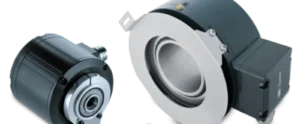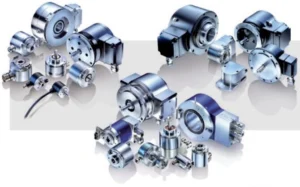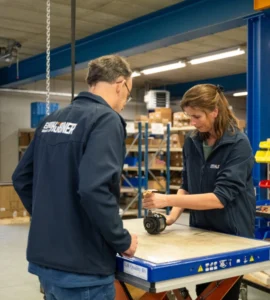When it comes to precision in motion control and automation, Baumer stands out as a trusted supplier of reliable and high-quality sensors. Among their wide range of products, two commonly used devices are the Baumer encoder and the Baumer tachometer. While they may seem similar at first glance, their functions and applications differ significantly.
In this blog, we’ll break down the key differences between these two technologies, explain what encoders are, explore the use of tachogenerators, and help you decide which one fits your application best.
What are encoders?
An encoder is an electromechanical device that converts motion into digital signals. In simple terms, Baumer encoders translate the position or movement of a shaft into readable data for a control system. There are two main types of encoders: incremental and absolute.
- Incremental encoders provide relative position feedback and are often used for speed monitoring.
- Absolute encoders deliver unique position values and are ideal for systems where position memory after power loss is critical.
Baumer encoders are known for their high precision and robust design, making them ideal for applications such as robotics, industrial automation, and motor feedback systems. Read more about what are encoders here.

What are tachometers?
A Baumer tachometer, also known as a tachogenerator, is used to measure the rotational speed of a shaft or motor, typically in revolutions per minute (RPM). Unlike encoders, tachometers usually output an analog voltage that corresponds to the speed of rotation.
Baumer tachometers are engineered for reliability, particularly in harsh environments. They are widely used in drive systems, elevators, cranes, and other speed-controlled applications.

Difference between encoders and tachometers
While both devices are used to monitor motion, their output and level of detail vary:
| Feature | Baumer Encoder | Baumer Tachometer |
| Measures | Position, direction, speed | Speed (RPM) |
| Output Signal | Digital (pulses or data packets) | Analog voltage |
| Accuracy | Very high | Moderate |
| Use in Automation | High-precision control systems | Speed feedback systems |
| Application Example | Robotics, CNC machines, conveyors | Motors, elevators, cranes |
In short:
- If you need precise position and direction, go for a Baumer encoder.
- If you need a reliable speed measurement, a Baumer tachometer (tachogenerator) is the way to go.
Where do you use them for?
Both encoders and tachometers serve critical roles in industrial automation:
- Baumer Encoders are ideal for:
- Conveyor systems
- Robotics
Printing machines - Packaging equipment
- Position feedback in servo motors
- Baumer Tachometers are commonly used in:
- Crane and hoist systems
Elevator drive control - Motor speed monitoring
- Steel mills and heavy industry
- Crane and hoist systems
What are the pro’s and con’s?
Here’s a quick overview of the advantages and limitations of each:
Baumer Encoders
Pros:
- High precision
- Digital output
- Position, direction & speed in one device
- Suitable for advanced control systems
Cons:
- Requires more complex wiring and setup
- Generally more expensive than tachometers
Baumer Tachometers (Tachogenerators)
Pros:
- Simple analog output
- Durable and cost-effective
- Easy to integrate into existing systems
Cons:
- Only provides speed data
- Lower resolution and accuracy
Baumer is your solution
Understanding the difference between encoders and tachometers is essential when designing or upgrading a motion control system. Whether you need accurate position feedback or just reliable speed monitoring, Baumer offers high-performance solutions tailored to your needs.
Still unsure which sensor fits your setup? Contact us, we’re happy to help you find the right solution.
